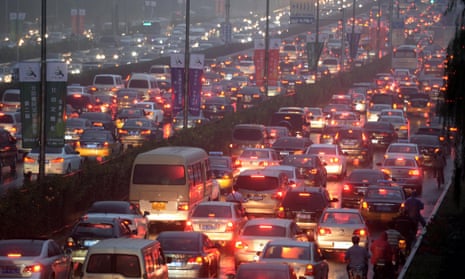In 2014, the European car magazine Auto Bild drove a Mercedes C220 on autopilot for 965 kilometres (600 miles), only twice applying the brake and barely touching the steering wheel. The automated vehicle, no longer the stuff of science fiction, is on the cusp of revolutionising the way companies do business.
Half of new road vehicles are registered by companies rather than individuals, and foresighted organisations are redesigning their fleets. “Everyone in the industry is looking at this”, says James Hookham, managing director for policy and communications at the Freight Transport Association.
The major cause of road accidents is driver error. In the US there are 5.5m road traffic accidents annually, 93% of which are thought to be caused by human error. Approximately 1.3 million people die in car accidents every year worldwide, with driver error accounting for over 90% of those losses.
Lukas Neckermann, business consultant and author of The Mobility Revolution, believes that autonomous vehicles have the potential to reduce this figure to zero. “The robotics involved are quicker to react and quicker to process data ... with no abrupt braking or acceleration, no swerving out of lane”, he says.
Autonomous vehicles are not entirely accident-proof. A taskforce set up by the Casualty Actuarial Society last year warned that when factoring for “weather, vehicle errors and inoperable traffic control devices”, autonomous vehicles would reduce accidents by 78% at best. Nevertheless, that would mark significant progress.
Advocates believe there’s no need for delay in this business revolution. Driverless vehicles can co-exist with human-driven cars, says Neckermann, because they “effectively calculate the actions of the non-autonomous ones, based on mounds and mounds of data” giving them “better eyesight” than human drivers. Most commercial flights are already controlled by auto-pilot – save for take-off and landing – so if we trust technology when several thousand miles up in the air, he asks, then why not on the road?
Eliminating driver error has an environmental benefit. “There is a massive difference between miles per gallon from driver to driver”, explains Paul Hollick, chairman of the Institute of Car Fleet Management. “Having an autonomous vehicle, you can know exactly what that vehicle can and will do.”
On motorways, automated heavy good vehicles could drive in trains with small gaps between each truck for improved aerodynamics. This offers fuel economy gains of 20-30%, says Neckermann, who believes the first logistics company to take the leap will gain significant competitive advantage.
In this brave new world, traffic jams caused by the accumulative effect of people braking would be no more. “The autonomous vehicle doesn’t just see the car in front, but sees the car 20 cars in front”, says Neckermann, thanks to vehicle-to-vehicle (V2V) communication. The economic impact of traffic jams amounts to €100bn (£80.7bn) across the EU; in the US, they lead to an unnecessary 2.9bn gallons of fuel guzzled every year.
“You will also potentially have a reduction in staff costs because you can run your fleet with fewer people”, Neckermann says. This doesn’t mean the end of the line for professional drivers, however, of whom there is already a shortage. Hollick believes autonomous vehicles will still need a person per vehicle, only they will be “far more engaged in the duty they have to perform when they arrive, for example on the customer experience.” He believes this could open up more employment for disabled people too.
Driverless cars free up the time of commuters. British commuters lose 10 working days a year stuck in traffic. If that time was spent on work or rest, rather than frustrated behind the wheel, it could have significant economic impact.
Much of these benefits remain theoretical, however. Neckermann admits that currently driverless sensors struggle with things such as potholes, faulty traffic lights, missing signs or unexpected diversions. There is also a significant question regarding liability.
“If there is a crash, who is responsible?” asks Hollick. “Is it the manufacturer, is it the telematics company which has provided the sensors, is it the driver, is it the employer? We don’t know.”
Most agree that autonomy is coming – it just depends how soon. Business will likely be an early adopter because of its high turnover of vehicles, with most fleets replaced every eight years. Fleet managers now “select vehicles very strategically, looking at whole life costs rather than just the cost of the metal”, says Hollick, meaning adoption may come quickly.
But how quickly? Neckermann suggests autonomous fleets will be on our roads by 2025. Renault-Nissan and Volvo both intend to sell self-driving cars by the end of this decade, with other major car manufacturers close behind. Prototypes of the Google car, designed to drive autonomously without a steering wheel, are already on public roads. The UK is hosting four driverless prototype trials.
“I think it will benefit every fleet in the UK”, says Hollick. “In 20 years time children will look back and say, ‘what, you actually drove that yourself?’ It’s going to be a revolution.”
The business futures hub is funded by The Crystal. All content is editorially independent except for pieces labelled “brought to you by”. Find out more here.
This content is brought to you by Guardian Professional. Become a GSB member to get more stories like this direct to your inbox.

Comments (…)
Sign in or create your Guardian account to join the discussion